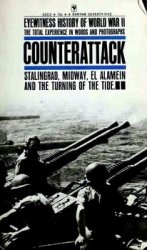In France, Belgium, and Holland the Germans found military supplies and factories enough to transform their war potential. In Germany, war production was actually cut back. France’s motor vehicle industry—to say nothing of vehicles abandoned by the British or taken from the other Allied armies—alleviated the German Army’s desperate shortages in the motorized infantry and motorized supply units. And Germany’s stockpiled fuel oil, deeply drained by ten months of fighting, was replenished with enough to keep the war machine going for another two years.
German soldiers were provided with occupation marks. The French and Belgian francs and the Dutch florin were pegged artificially low—the French currency about 20 per cent below its true value— and issue banks were forbidden to devalue.
This not only had the effect of draining everything—from champagne to real estate—into German hands at bargain prices, but it prevented German goods leaving Germany, except at bonanza prices. It was a subtle form of plunder, and it took a long time before the citizens of the conquered countries were anything but delighted at the generous prices they were being paid for their goods and services.
In addition, each defeated country was made to pay for the maintenance of the German occupation forces. In the summer of 1940 France began paying 400 million francs per day as a “contribution to her defense against Britain.”
The battle of France ended, not as it had begun, with the dramatic blitzkrieg that Manstein and Guderian had designed, but with plodding infantry and horse-drawn artillery that had reverted to the Kessel-schlacht techniques. The blitzkrieg method was never again successfully used. The scale and the shape of northern France had provided the perfect board for this exciting game. From now on there would be mountains and empty deserts and the vast space of the Russian landscape—no convenient road networks and sophisticated armies that could be unbalanced by a pinprick where they least expected it. The Germans would strike eastward and find a cruder enemy with simpler supply problems, men and women who laughed at pinpricks and kept fighting without food, water, and communications.
Tanks were never again to inspire the same widespread brain-numbing terror they caused France in May 1940. Bigger and better antitank guns were already on their way and soon would come exotic tapered bore weapons and curious discarding and composite missiles. The infantry would be issued with lightweight weapons with which one determined man could destroy a tank, and trained soldiers would realize how vulnerable armored vehicles could be.
And yet before we declare Plan Yellow to be the only successful blitzkrieg, it is worth looking at the declared objectives of that offensive. One stated aim was to engage and defeat the strongest possible part of the Allied armies. Hitler had specifically ordered the annihilation of the BEF and that it should be prevented from escaping across the Channel. The Germans had failed in that endeavor. It was to prove a fatal flaw.




 World History
World History









